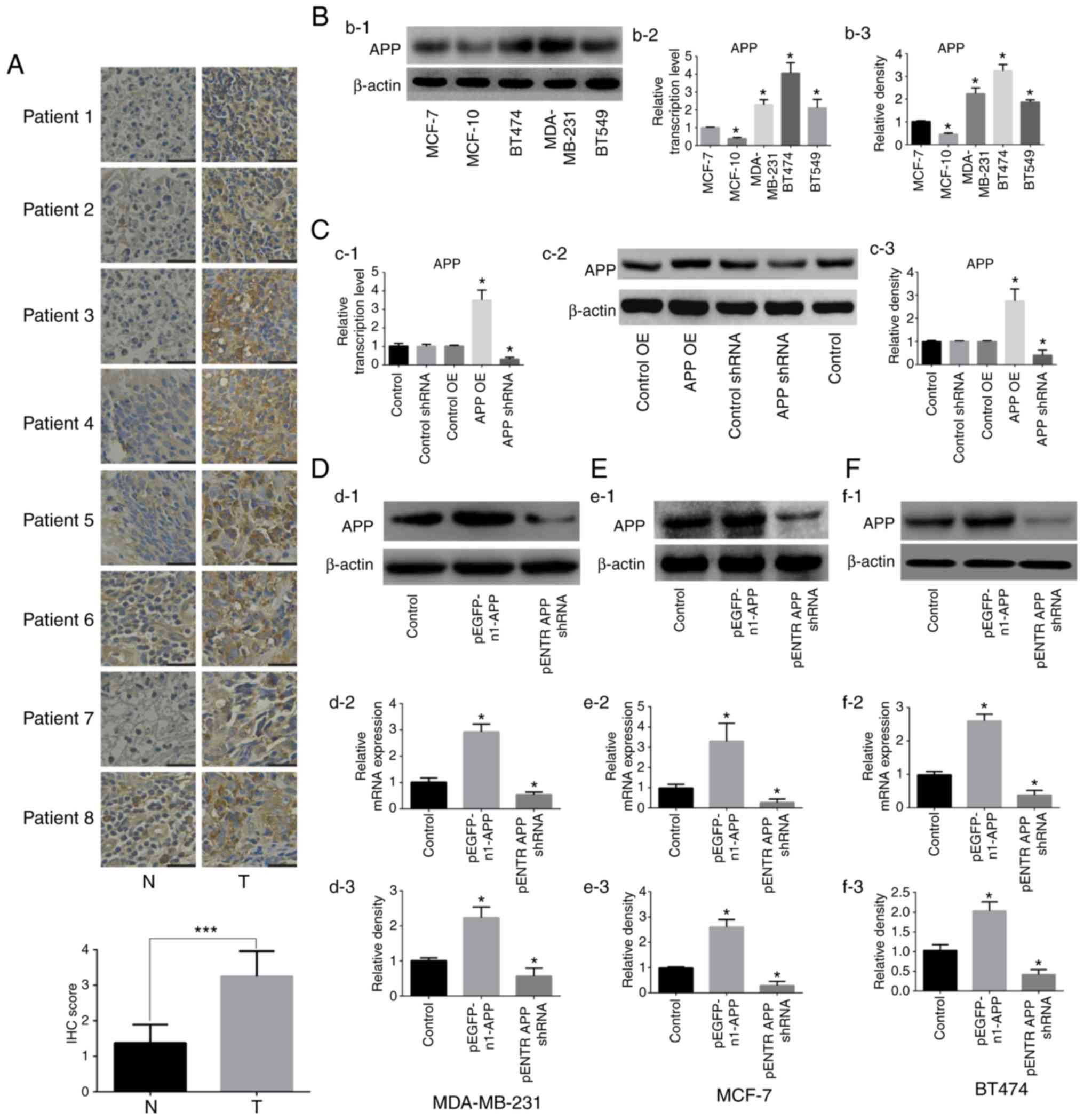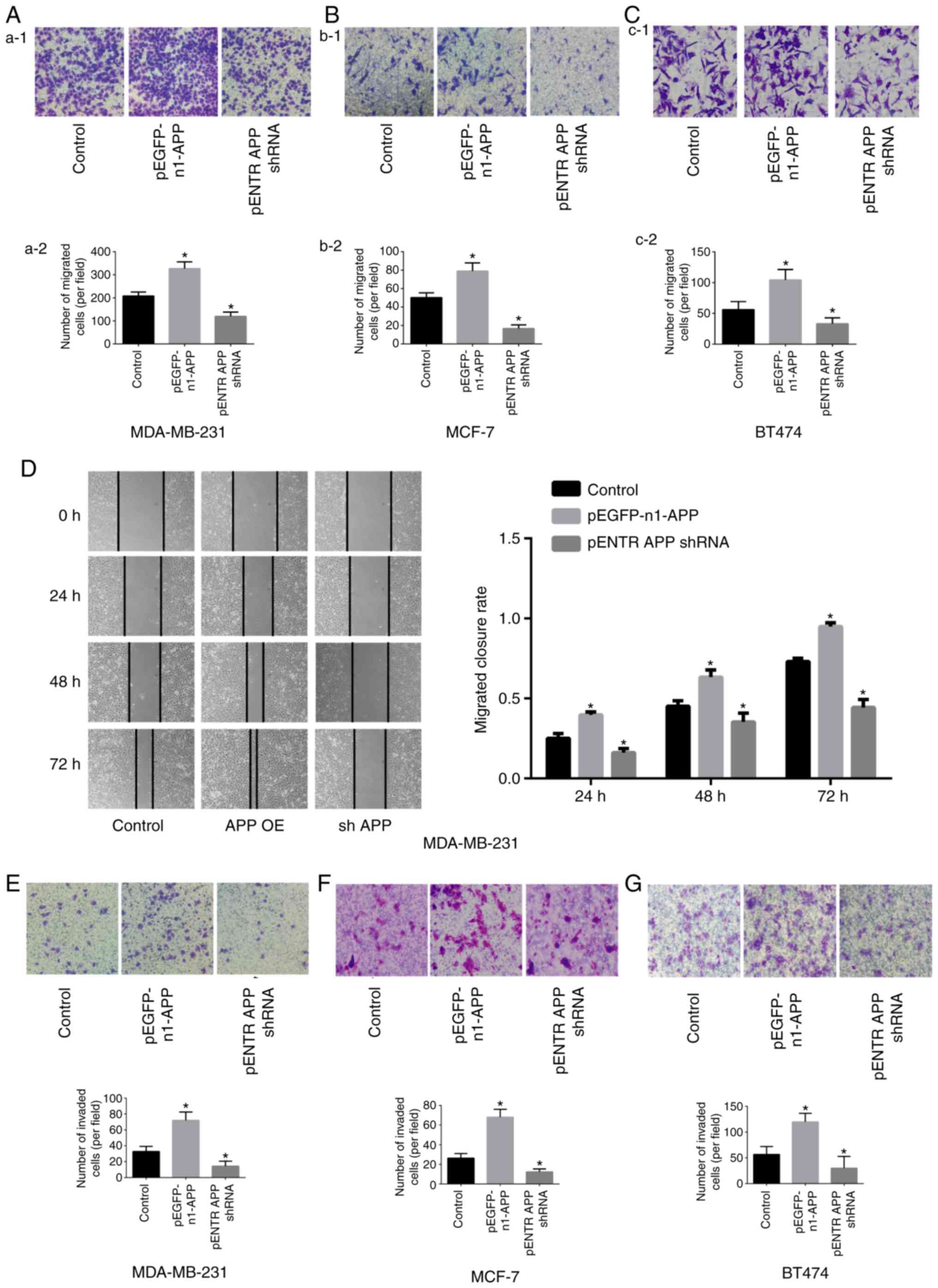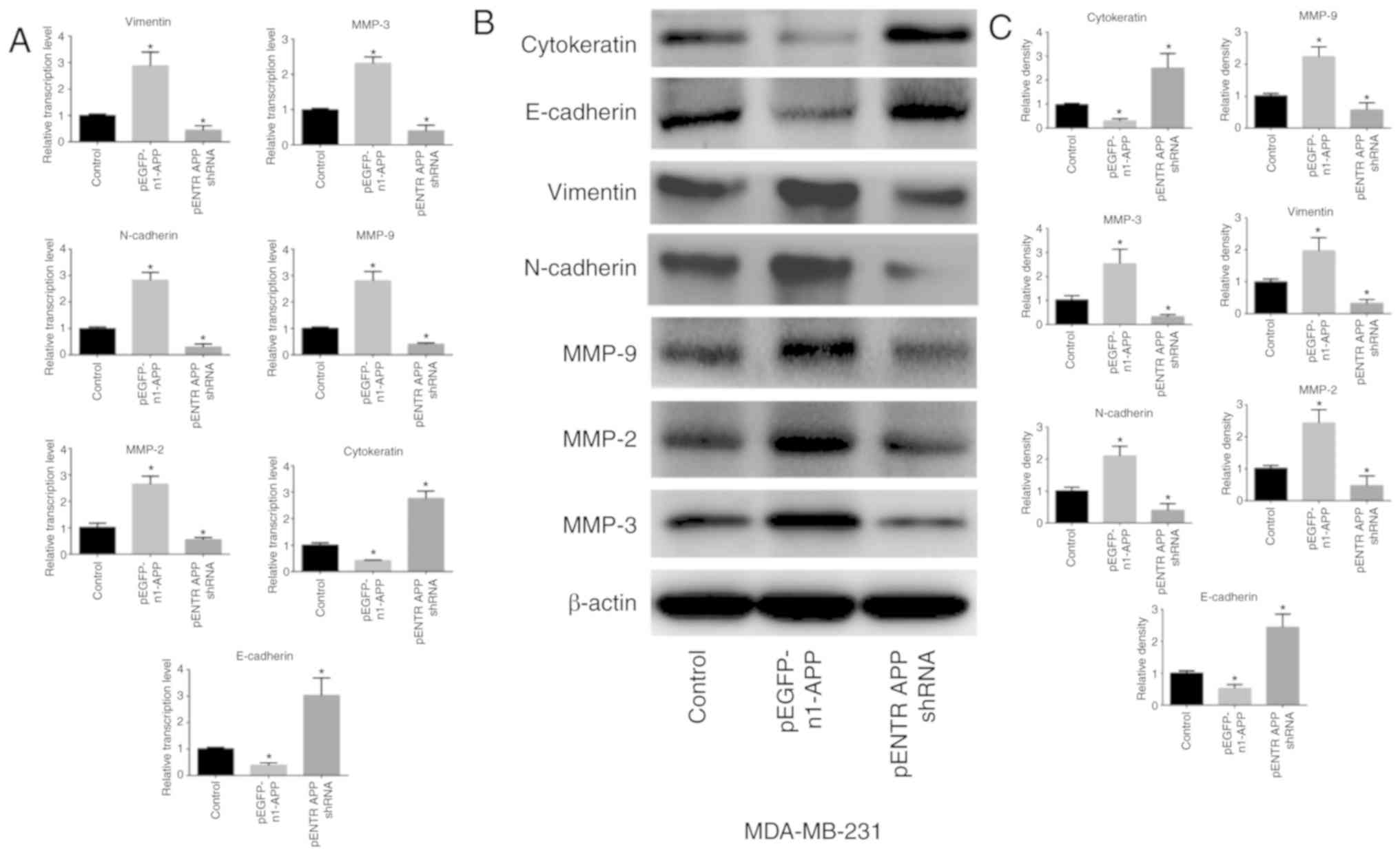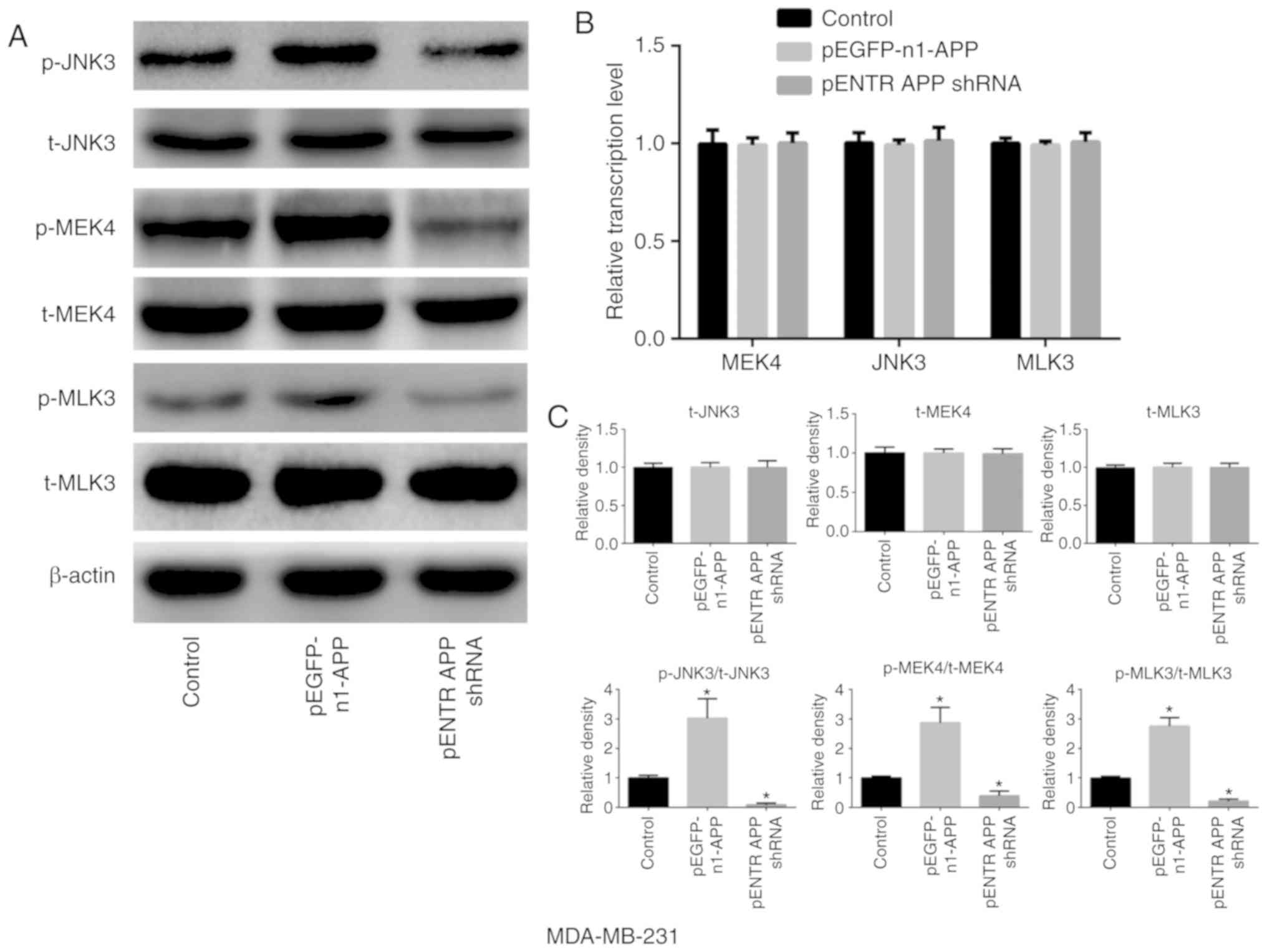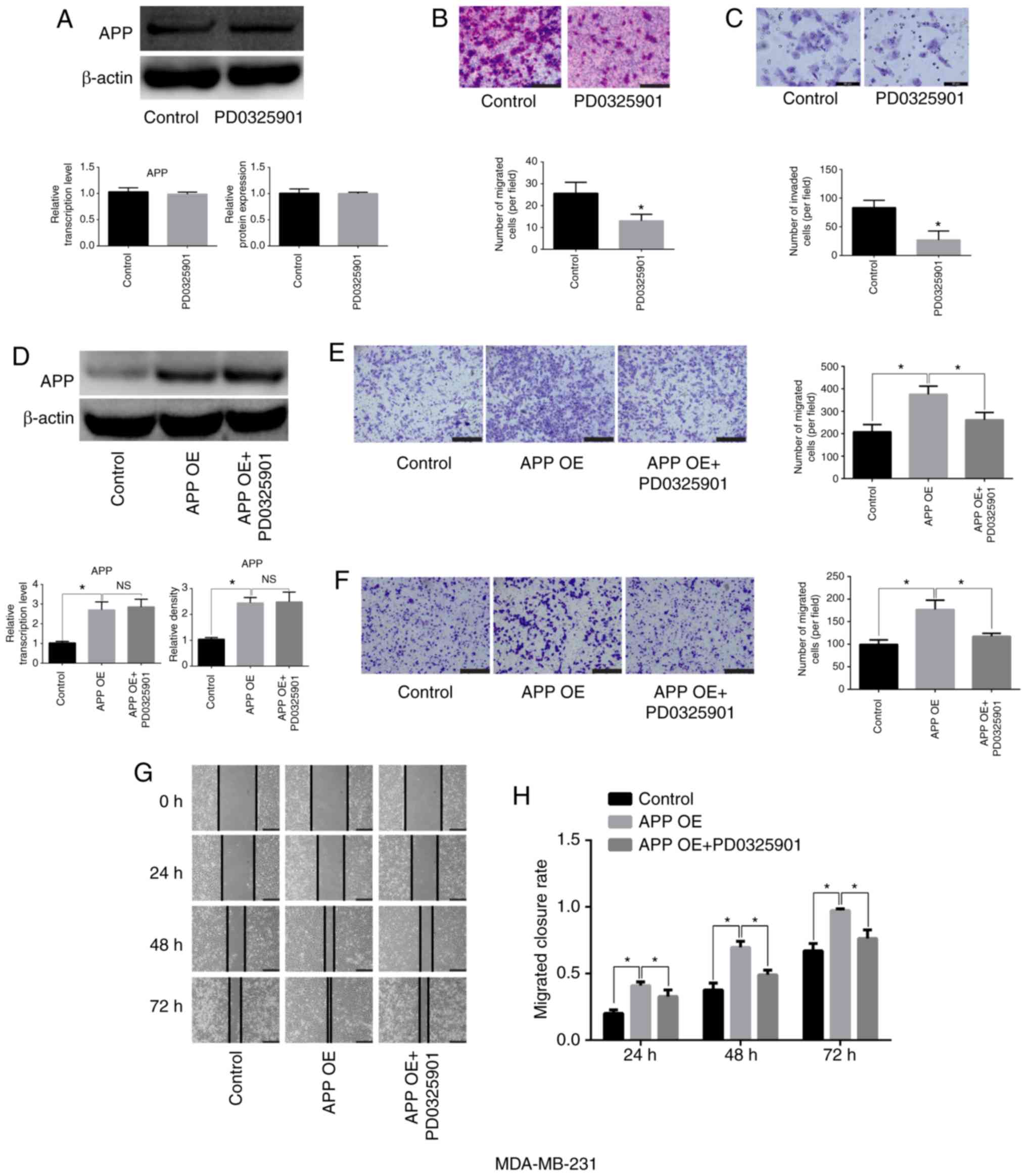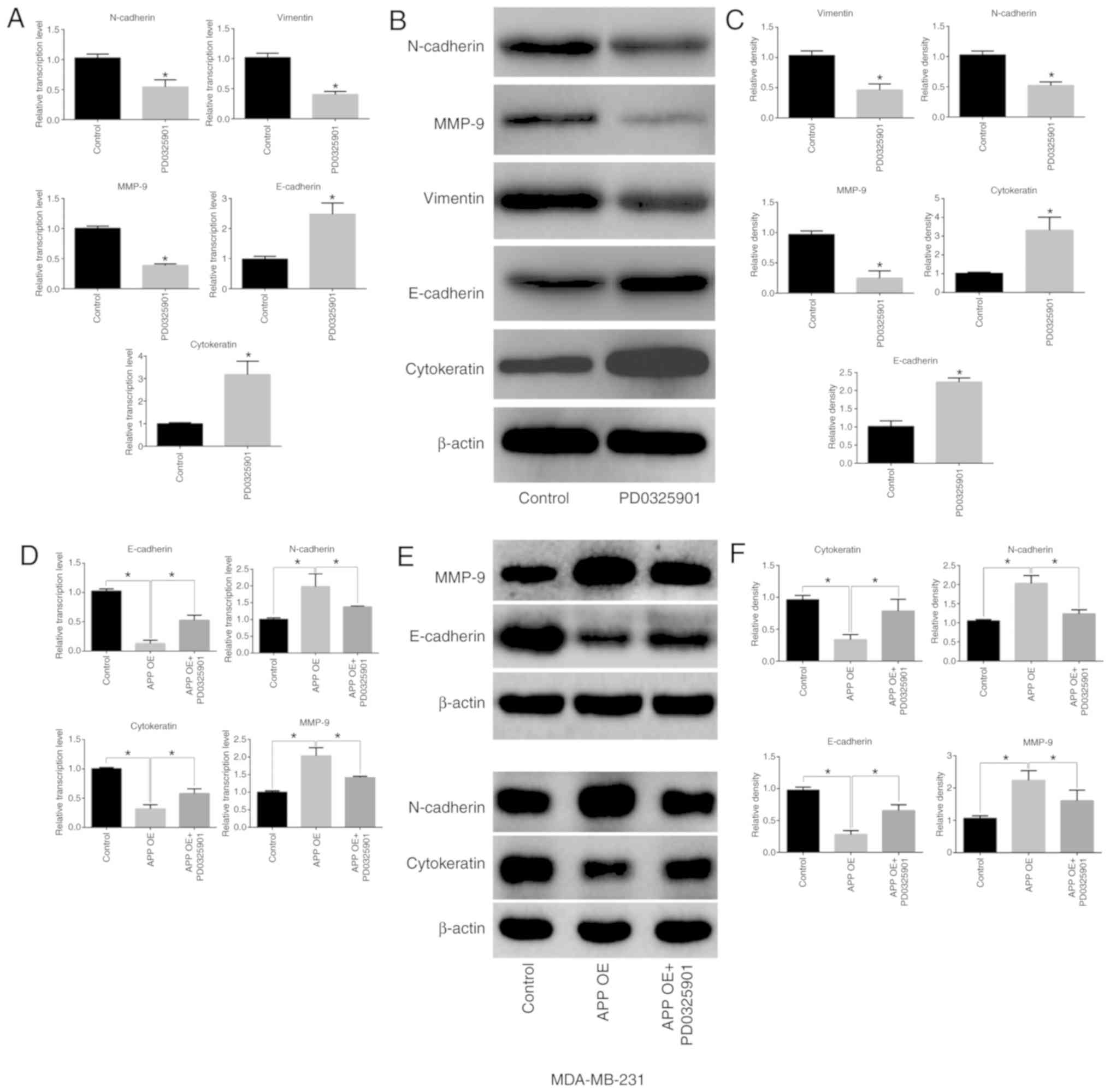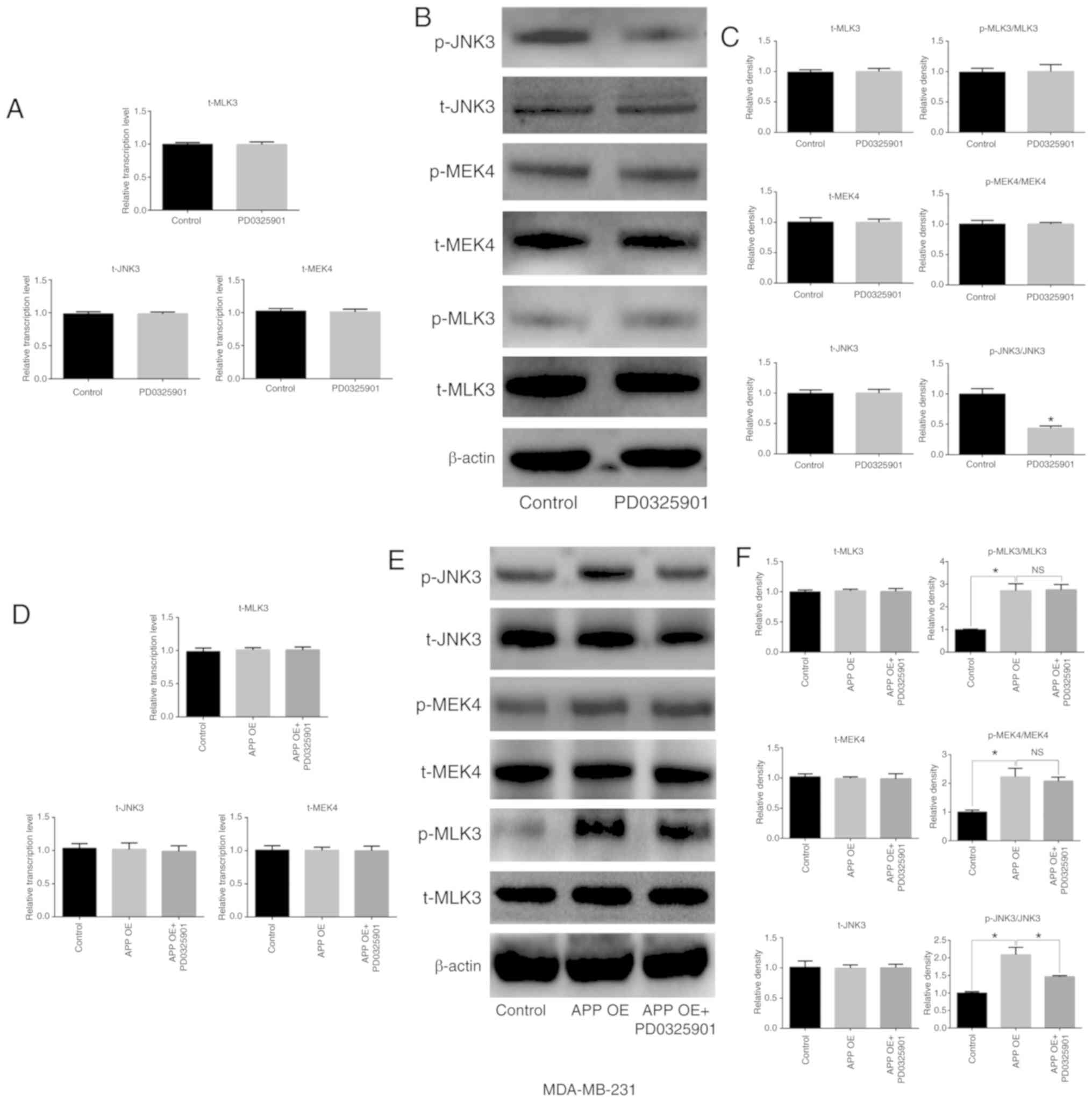|
1
|
Siegel RL, Miller KD and Jemal A: Cancer
statistics, 2017. CA Cancer J Clin. 67:7–30. 2017. View Article : Google Scholar : PubMed/NCBI
|
|
2
|
Antoni MH and Dhabhar FS: The impact of
psychosocial stress and stress management on immune responses in
patients with cancer. Cancer. 125:1417–1431. 2019. View Article : Google Scholar : PubMed/NCBI
|
|
3
|
Cedolini C, Bertozzi S, Londero AP,
Bernardi S, Seriau L, Concina S, Cattin F and Risaliti A: Type of
breast cancer diagnosis, screening, and survival. Clin Breast
Cancer. 14:235–240. 2014. View Article : Google Scholar : PubMed/NCBI
|
|
4
|
Criscitiello C, Viale G and Curigliano G:
Peptide vaccines in early breast cancer. Breast. 44:128–134. 2019.
View Article : Google Scholar : PubMed/NCBI
|
|
5
|
Feng C, Zhang H, Chen J, Wang S, Xin Y, Qu
Y, Zhang Q, Ji W, Yamashita F, Rui M and Xu X: Ratiometric
co-encapsulation and co-delivery of doxorubicin and paclitaxel by
tumor-targeted lipo-disks for combination therapy of breast cancer.
Int J Pharm. 560:191–204. 2019. View Article : Google Scholar : PubMed/NCBI
|
|
6
|
Balazy KE, Benitez CM, Gutkin PM, Jacobson
CE, von Eyben R and Horst KC: Association between primary language,
a lack of mammographic screening, and later stage breast cancer
presentation. Cancer. 125:2057–2065. 2019. View Article : Google Scholar : PubMed/NCBI
|
|
7
|
Peart O: Breast intervention and breast
cancer treatment options. Radiol Technol. 86:535M–558M; quiz
559-562. 2015.PubMed/NCBI
|
|
8
|
Castaneda SA and Strasser J: Updates in
the treatment of breast cancer with radiotherapy. Surg Oncol Clin N
Am. 26:371–382. 2017. View Article : Google Scholar : PubMed/NCBI
|
|
9
|
Klein CA: Parallel progression of primary
tumours and metastases. Nat Rev Cancer. 9:302–312. 2009. View Article : Google Scholar : PubMed/NCBI
|
|
10
|
Yousefi M, Nosrati R, Salmaninejad A,
Dehghani S, Shahryari A and Saberi A: Organ-specific metastasis of
breast cancer: Molecular and cellular mechanisms underlying lung
metastasis. Cell Oncol (Dordr). 41:123–140. 2018. View Article : Google Scholar
|
|
11
|
Sharma R, Sharma R, Khaket TP, Dutta C,
Chakraborty B and Mukherjee TK: Breast cancer metastasis: Putative
therapeutic role of vascular cell adhesion molecule-1. Cell Oncol
(Dordr). 40:199–208. 2017. View Article : Google Scholar
|
|
12
|
Uemura MI, French JT, Hess KR, Liu D,
Raghav K, Hortobagyi GN, Arun BK, Valero V, Ueno NT, Alvarez RH, et
al: Development of CNS metastases and survival in patients with
inflammatory breast cancer. Cancer. 124:2299–2305. 2018. View Article : Google Scholar : PubMed/NCBI
|
|
13
|
Szarszewska M, Markowska A, Jach R,
Marszałek A, Filas V, Bednarek W, Olejek A, Tomczak P, Sajdak S,
Nowak-Markwitz E, et al: Significance of BRCA1 expression in breast
and ovarian cancer patients with brain metastasis-A multicentre
study. Adv Med Sci. 64:235–240. 2019. View Article : Google Scholar : PubMed/NCBI
|
|
14
|
Fu B, Zhang A, Li M, Pan L, Tang W, An M,
Liu W and Zhang J: Circular RNA profile of breast cancer brain
metastasis: Identification of potential biomarkers and therapeutic
targets. Epigenomics. 10:1619–1630. 2018. View Article : Google Scholar
|
|
15
|
Rice SL and Friedman KP: Clinical PET-MR
imaging in breast cancer and lung cancer. PET Clin. 11:387–402.
2016. View Article : Google Scholar : PubMed/NCBI
|
|
16
|
Liu H, Li Z, Deng M, Liu Q, Zhang T, Guo
W, Li P and Qiao W: Prognostic and clinicopathological value of
CXCL12/SDF1 expression in breast cancer: A meta-analysis. Clin Chim
Acta. 484:72–80. 2018. View Article : Google Scholar : PubMed/NCBI
|
|
17
|
BacalbaȘa N, Balescu I, Dima S and Popescu
I: Long-term survivors after liver resection for breast cancer
liver metastases. Anticancer Res. 35:6913–6917. 2015.
|
|
18
|
Ma R, Feng Y, Lin S, Chen J, Lin H, Liang
X, Zheng H and Cai X: Mechanisms involved in breast cancer liver
metastasis. J Transl Med. 13:642015. View Article : Google Scholar : PubMed/NCBI
|
|
19
|
Holen I, Lefley DV, Francis SE, Rennicks
S, Bradbury S, Coleman RE and Ottewell P: IL-1 drives breast cancer
growth and bone metastasis in vivo. Oncotarget. 7:75571–75584.
2016. View Article : Google Scholar : PubMed/NCBI
|
|
20
|
Neelakantan D, Zhou H, Oliphant MUJ, Zhang
X, Simon LM, Henke DM, Shaw CA, Wu MF, Hilsenbeck SG, White LD, et
al: EMT cells increase breast cancer metastasis via paracrine GLI
activation in neighbouring tumour cells. Nat Commun. 8:157732017.
View Article : Google Scholar : PubMed/NCBI
|
|
21
|
Chaffer CL, San Juan BP, Lim E and
Weinberg RA: EMT, cell plasticity and metastasis. Cancer Metastasis
Rev. 35:645–654. 2016. View Article : Google Scholar : PubMed/NCBI
|
|
22
|
Xu M, Wang S, Wang Y, Wu H, Frank JA,
Zhang Z and Luo J: Role of p38γ MAPK in regulation of EMT and
cancer stem cells. Biochim Biophys Acta Mol Basis Dis.
1864:3605–3617. 2018. View Article : Google Scholar : PubMed/NCBI
|
|
23
|
Tian M and Schiemann WP: TGF-β stimulation
of EMT programs elicits non-genomic ER-α activity and anti-estrogen
resistance in breast cancer cells. J Cancer Metastasis Treat.
3:150–160. 2017. View Article : Google Scholar :
|
|
24
|
Mutlu M, Saatci Ö, Ansari SA, Yurdusev E,
Shehwana H, Konu Ö, Raza U and Şahin Ö: miR-564 acts as a dual
inhibitor of PI3K and MAPK signaling networks and inhibits
proliferation and invasion in breast cancer. Sci Rep. 6:325412016.
View Article : Google Scholar : PubMed/NCBI
|
|
25
|
Wang X, Zhou X, Li G, Zhang Y, Wu Y and
Song W: Modifications and trafficking of APP in the pathogenesis of
Alzheimer's disease. Front Mol Neurosci. 10:2942017. View Article : Google Scholar : PubMed/NCBI
|
|
26
|
Hefter D and Draguhn A: APP as a
protective factor in acute neuronal insults. Front Mol Neurosci.
10:222017. View Article : Google Scholar : PubMed/NCBI
|
|
27
|
Hatami A, Monjazeb S, Milton S and Glabe
CG: Familial Alzheimer's disease mutations within the amyloid
precursor protein alter the aggregation and conformation of the
amyloid-β peptide. J Biol Chem. 292:3172–3185. 2017. View Article : Google Scholar : PubMed/NCBI
|
|
28
|
Wilkins HM and Swerdlow RH: Amyloid
precursor protein processing and bioenergetics. Brain Res Bull.
133:71–79. 2017. View Article : Google Scholar :
|
|
29
|
Habib A, Sawmiller D and Tan J: Restoring
soluble amyloid precursor protein α functions as a potential
treatment for Alzheimer's disease. J Neurosci Res. 95:973–991.
2017. View Article : Google Scholar
|
|
30
|
Strilic B, Yang L, Albarrán-Juárez J,
Wachsmuth L, Han K, Müller UC, Pasparakis M and Offermanns S:
Tumour-cell-induced endothelial cell necroptosis via death receptor
6 promotes metastasis. Nature. 536:215–218. 2016. View Article : Google Scholar : PubMed/NCBI
|
|
31
|
Lei H, Zhang Y, Huang L, Xu S, Li J, Yang
L, Wang L, Xing C, Wang X and Peng Y: L-3-n-Butylphthalide
regulates proliferation, migration, and differentiation of neural
stem cell in vitro and promotes neurogenesis in APP/PS1 mouse model
by regulating BDNF/TrkB/CREB/Akt pathway. Neurotox Res. 34:477–488.
2018. View Article : Google Scholar : PubMed/NCBI
|
|
32
|
Harder H, Holroyd P, Burkinshaw L, Watten
P, Zammit C, Harris PR, Good A and Jenkins V: A user-centred
approach to developing bWell, a mobile app for arm and shoulder
exercises after breast cancer treatment. J Cancer Surviv.
11:732–742. 2017. View Article : Google Scholar : PubMed/NCBI
|
|
33
|
Di Stadio CS, Altieri F, Minopoli G,
Miselli G, Rippa E and Arcari P: Role of human GKN1 on APP
processing in gastric cancer. Biochimie. 135:149–153. 2017.
View Article : Google Scholar : PubMed/NCBI
|
|
34
|
Tsang JYS, Lee MA, Ni YB, Chan SK, Cheung
SY, Chan WW, Lau KF and Tse GMK: Amyloid precursor protein is
associated with aggressive behavior in nonluminal breast cancers.
Oncologist. 23:1273–1281. 2018. View Article : Google Scholar : PubMed/NCBI
|
|
35
|
Takagi K, Ito S, Miyazaki T, Miki Y,
Shibahara Y, Ishida T, Watanabe M, Inoue S, Sasano H and Suzuki T:
Amyloid precursor protein in human breast cancer: An
androgen-induced gene associated with cell proliferation. Cancer
Sci. 104:1532–1538. 2013. View Article : Google Scholar : PubMed/NCBI
|
|
36
|
Mao Y, Zhang Y, Fan S, Chen L, Tang L,
Chen X and Lyu J: GALNT6 promotes tumorigenicity and metastasis of
breast cancer cell via β-catenin/MUC1-C signaling pathway. Int J
Biol Sci. 15:169–182. 2019. View Article : Google Scholar :
|
|
37
|
Livak KJ and Schmittgen TD: Analysis of
relative gene expression data using real-time quantitative PCR and
the 2(-Delta Delta C(T)) method. Methods. 25:402–408. 2001.
View Article : Google Scholar
|
|
38
|
Schwartz RS and Erban JK: Timing of
metastasis in breast cancer. N Engl J Med. 376:2486–2488. 2017.
View Article : Google Scholar : PubMed/NCBI
|
|
39
|
Peart O: Metastatic breast cancer. Radiol
Technol. 88:519M–539M. 2017.PubMed/NCBI
|
|
40
|
Pandey P, Sliker B, Peters HL, Tuli A,
Herskovitz J, Smits K, Purohit A, Singh RK, Dong J, Batra SK, et
al: Amyloid precursor protein and amyloid precursor-like protein 2
in cancer. Oncotarget. 7:19430–19444. 2016. View Article : Google Scholar : PubMed/NCBI
|
|
41
|
Golde TE, Cai XD, Shoji M and Younkin SG:
Production of amyloid beta protein from normal amyloid beta-protein
precursor (beta APP) and the mutated beta APPS linked to familial
Alzheimer's disease. Ann N Y Acad Sci. 695:103–108. 1993.
View Article : Google Scholar : PubMed/NCBI
|
|
42
|
Zhao L, He D, Jiao M, Kong L, Shao C, Chen
J, Fang Z, Ma X, Chen H, Li L, et al: Overexpression of histone
deacetylase and amyloid precursor protein in hepatocellular
carcinoma. Technol Cancer Res Treat. 16:586–594. 2017. View Article : Google Scholar :
|
|
43
|
Sobol A, Galluzzo P, Liang S, Rambo B,
Skucha S, Weber MJ, Alani S and Bocchetta M: Amyloid precursor
protein (APP) affects global protein synthesis in dividing human
cells. J Cell Physiol. 230:1064–1074. 2015. View Article : Google Scholar :
|
|
44
|
Miyazaki T, Ikeda K, Horie-Inoue K and
Inoue S: Amyloid precursor protein regulates migration and
metalloproteinase gene expression in prostate cancer cells. Biochem
Biophys Res Commun. 452:828–833. 2014. View Article : Google Scholar : PubMed/NCBI
|
|
45
|
Yu Y, Lv F, Liang D, Yang Q, Zhang B, Lin
H, Wang X, Qian G, Xu J and You W: HOTAIR may regulate
proliferation, apoptosis, migration and invasion of MCF-7 cells
through regulating the P53/Akt/JNK signaling pathway. Biomed
Pharmacother. 90:555–561. 2017. View Article : Google Scholar : PubMed/NCBI
|
|
46
|
Zhou J, Zhang WW, Peng F, Sun JY, He ZY
and Wu SG: Downregulation of hsa_circ_0011946 suppresses the
migration and invasion of the breast cancer cell line MCF-7 by
targeting RFC3. Cancer Manag Res. 10:535–544. 2018. View Article : Google Scholar : PubMed/NCBI
|
|
47
|
Shi C, Zhu X, Wang J and Long D: Estrogen
receptor α promotes non-amyloidogenic processing of platelet
amyloid precursor protein via the MAPK/ERK pathway. J Steroid
Biochem Mol Biol. 144(Pt B): 280–285. 2014. View Article : Google Scholar
|
|
48
|
Zhao XW, Zhou JP, Bi YL, Wang JY, Yu R,
Deng C, Wang WK, Li XZ, Huang R, Zhang J and Tao DT: The role of
MAPK signaling pathway in formation of EMT in oral squamous
carcinoma cells induced by TNF-α. Mol Biol Rep. 46:3149–3156. 2019.
View Article : Google Scholar : PubMed/NCBI
|
|
49
|
Kumar K, Chow CR, Ebine K, Arslan AD, Kwok
B, Bentrem DJ, Eckerdt FD, Platanias LC and Munshi HG: Differential
regulation of ZEB1 and EMT by MAPK-interacting protein kinases
(MNK) and eIF4E in pancreatic cancer. Mol Cancer Res. 14:216–227.
2016. View Article : Google Scholar
|















